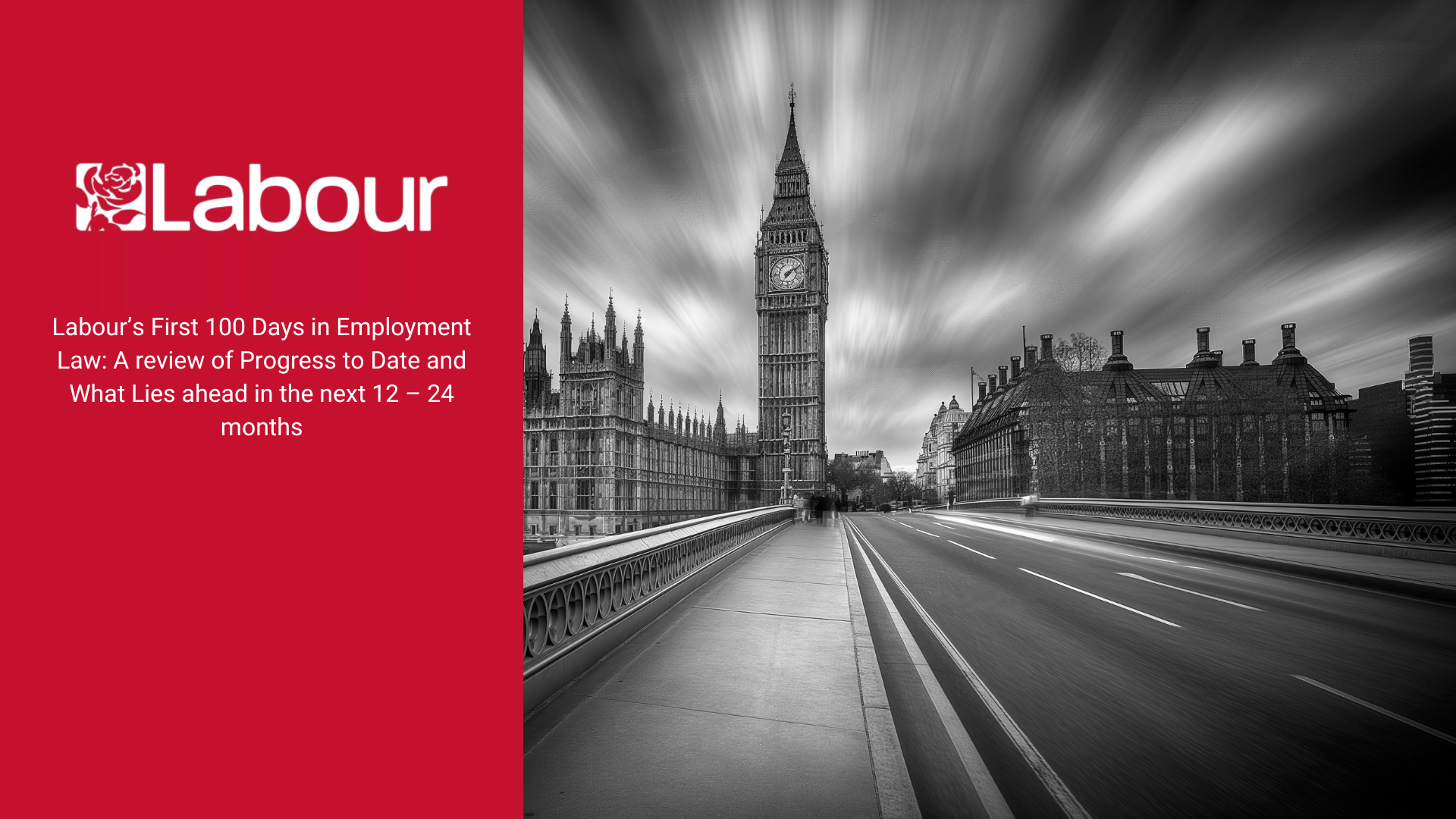Gender discrimination in the workplace
Unfortunately, gender discrimination is still relatively common in the workplace. So, what is gender discrimination and what can you do about it if you think you have suffered discrimination?
What is gender discrimination?
The law provides that men and women must be treated equally in the workplace, including in respect of:
- recruitment and training,
- employment terms and conditions,
- pay and benefits,
- promotion and transfer opportunities,
- dismissal and redundancy.
The Equality Act 2010 prohibits discrimination based on sex or gender and gender discrimination occurs when an employee is treated unfairly because of their gender. Examples include when a woman is paid less than a man for the same job, or when a man is told that he didn’t get a secretarial position because it would be better suited to a woman.
Gender discrimination doesn’t have to be deliberate or intentional. The law prohibiting gender discrimination also covers most workers, including employees, agency workers, trainees and the self-employed.
The law applies to men and women
It’s important to note that discrimination is not just in respect of women. Men and women can both be discriminated against. However, sex discrimination is different to discrimination due to sexual orientation. This occurs when an employee is treated unfairly because they are heterosexual, gay, lesbian or bisexual. Trans people also have separate protection which is referred to below.
The law and positive discrimination
It is also worth noting that contrary to popular belief, the law does not allow positive discrimination in favour of one sex. An example of positive discrimination would be where an employer has an all-male workforce and decides when recruiting to only offer the position to women to redress the balance.
That said, in some circumstances, an employer may encourage or offer support specifically to one sex where that gender suffers a general disadvantage or are poorly represented in the role but only in respect of training and encouragement to apply for posts.
In such circumstances, they may sometimes also promote or hire someone of one gender over someone of another with the same qualifications. However, the circumstances where encouragement, employment or promotion can be done are complicated and very limited indeed so legal advice should be sought.
Other ‘protected characteristics’
It’s helpful to understand that there are other types of discrimination, in addition to discrimination which relates to gender or sex. In particular, workers are also protected in respect of:
- age
- gender reassignment
- being married or in a civil partnership
- being pregnantor on maternity leave
- disability (including a mental health disability)
- race including colour, nationality, ethnic or national origin
- religion or belief
- sexual orientation
It is possible to be the victim of discrimination related to more than one characteristic.
Gender as an occupational requirement
There may be times when an employer is able to justify the need to employ a particular sex. This might include the need to employ a woman to work closely with vulnerable women or young girls, where a male in the same position could prove unsuitable on grounds of privacy or decency.
This is known as an occupational requirement and if established, won’t be classed as discrimination. However, establishing an occupational requirement is deliberately hard to do. For instance, it cannot include subjective considerations such as the particular wishes of a customer.
What’s the difference between sex and gender discrimination?
The term ‘sex’ is normally used to describe whether someone is male or female and is used in the Equality Act 2010 when referring to discrimination between men and women. The terms sex and gender can have different meanings, in particular in respect of transgender identity. However, when you see the terms gender discrimination and sex discrimination, they are referring to the same thing.
Gender reassignment
People undergoing gender reassignment, or are proposing to do so, are also protected in their employment under the Equality Act and have all the usual protections against direct and indirect discrimination, harassment and victimisation.
Whilst trans people therefore have protection, there is no explicit protection in the act for employees identifying as intersex or non-binary in some way. ACAS guidance however exhorts employers to those with genders outside man or woman as if they were protected by the Equality Act.
Different types of gender discrimination
Direct gender discrimination
As with most discrimination, there are different ways gender discrimination can happen. You may be directly discriminated against, such as an employee being paid less because of their sex.
Indirect gender discrimination
Alternatively, you may be the victim of indirect discrimination. This happens when your employer has a rule, policy or practice which someone of a particular sex is less likely to be able to meet, which therefore puts them at a disadvantage. Common examples of this include when an employer’s hours of work are difficult for many women to meet because of child caring responsibilities.
Victimisation and harassment
You may also be a victim of gender discrimination if you are treated unfairly because you have raised an issue about it yourself, or because of your connection to someone else who has been sexually discriminated against. For example, if you have supported a colleague or made a complaint on their behalf about unfair treatment.
Finally, if you have been subjected to unwanted behaviour linked to your sex in a way that has violated your dignity or created an offensive or upsetting environment, you may be able to bring a claim.
Equal Pay
Equal pay has been in the headlines a lot over the last few years. It is unlawful for employers to discriminate between men and women in terms of their pay and conditions where they are doing either:
- the same or similar work (like work)
- work rated as equivalent in a job evaluation study by the employer
- work of equal value.
Pay can include all types of pay, including:
- basic pay and overtime
- performance related benefits
- pensions
- payments on termination
- payments in kind as opposed to cash
Comparing pay
As an employee, you have the right to compare any terms in your contract of employment with the equivalent terms in a “comparator’s” contract. A comparator is an employee of the opposite sex working for the same employer, doing like work, work of equal value or work rated as equivalent (by a job evaluation study).
You are also entitled to know how a comparator’s pay is made up (i.e. how a bonus system is calculated). Your employer may then have to show that there is a genuine factor that justifies a difference in pay.
What you can do about gender discrimination
If you think you’ve been unfairly discriminated against you should start by contacting your employer. If you think you may be receiving unequal pay, you should ask them for all the information you need to ascertain if this correct and if so, any reasons for it.
If raising the matter with your employer informally doesn’t resolve the matter, then you should use your employer’s grievance procedure.
You may want the support of a colleague or representative at this stage.
Finally, if the matter remains unresolved, you can consider issuing a claim in the employment tribunal.
It is sensible to take legal advice at an early stage. A legal advisor can advise you about how to handle the situation with your employer and raise your grievance and if matters progress what type of claim you should make, your chances of success and how much you might be awarded if your claim is successful.
You have to bring a legal claim within a certain time period, so it is also important to act quickly if you feel you have been discriminated against.
Unfortunately, gender discrimination remains relatively common in the workplace. If you are worried that you may have been discriminated against, or if you’d like to know more, call us today.











